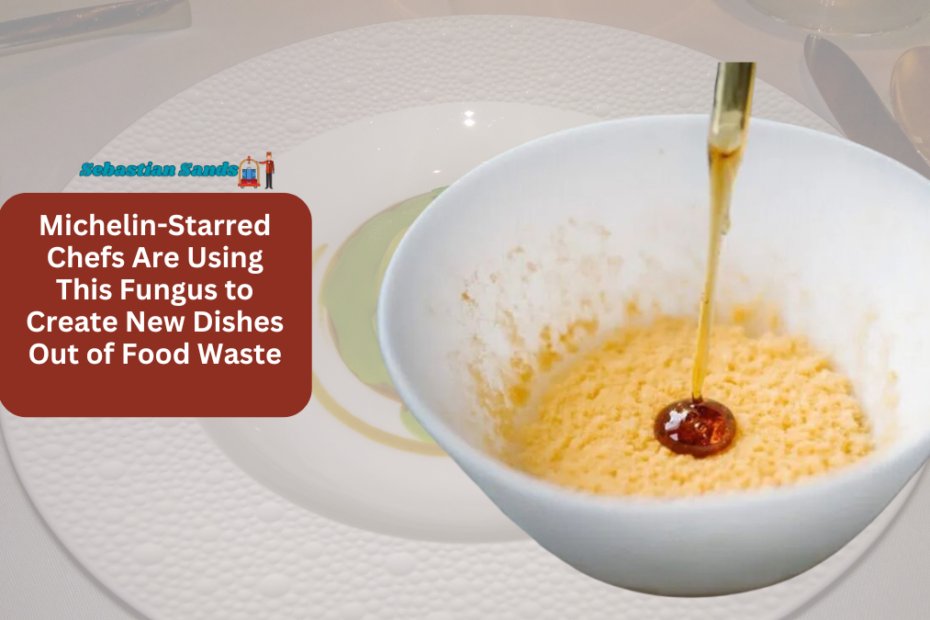Food waste is a significant issue in the U.S., with around 30% to 40% of the food supply being discarded annually. In response, a team of scientists and Michelin-starred chefs are using an innovative approach to tackle this problem. They are transforming food waste into gourmet delicacies with the help of a unique fungus.
A recent study published in Nature Microbiology, led by Vayu Hill-Maini, Ph.D., a chef and scientist at the University of California, Berkeley, explores the use of Neurospora intermedia—a fungus that can ferment discarded food into edible and nutritious dishes.
This breakthrough is already being used in some of the world’s top kitchens, offering a new way to address sustainability and food waste.
What Is Neurospora Intermedia?
Neurospora intermedia is a type of fungus traditionally used in Indonesia to make a dish called oncom, which is made from fermented soy pulp. This fungus is remarkable because it can break down pectin and cellulose, turning plant byproducts like fruit pulp and vegetable scraps into something edible.
Chef Andrew Luzmore from Blue Hill at Stone Barns explains, “It has the unique ability to break down cellulose into edible food. It’s a new tool to provide value to what is considered food waste.” This fungus is now being used to create sustainable dishes at award-winning restaurants like Blue Hill and Copenhagen’s Alchemist.
Read More : McDonald’s New Mini McFlurry: Smaller Size, Lower Price, And Eco-Friendly Packaging
How Does It Work?
Neurospora intermedia ferments food byproducts, transforming them into new textures and flavors. This process not only makes the food edible but also enhances its nutritional value. Initially, Blue Hill at Stone Barns sent its food waste to Hill-Maini’s lab for fermentation, but the restaurant has since invested in its own equipment to experiment with the fungus on-site.
The result is an exciting new tool for chefs. As Hill-Maini points out, “With Neurospora intermedia, we have a new tool in the chef’s toolbox one that brings new colors, textures, and flavors. It opens doors for creativity in gastronomy.”
Culinary Applications
Neurospora intermedia has a range of culinary applications. At Blue Hill, Luzmore has used it to create sausage that includes grains and vegetables, achieving a smooth texture that is usually difficult with plant-based ingredients. The fungus acts as a binding agent, making food easier to work with.
Additionally, Luzmore has used it to transform stale rice bread into a savory, flavorful product. The versatility of Neurospora intermedia makes it an exciting ingredient for chefs looking to reduce waste while still producing top-quality dishes.
Read More : Arby’s Joins The Pumpkin Craze With a New Fall Dessert
Addressing Food Sustainability
Sustainability is a major benefit of using Neurospora intermedia. The fungus was originally domesticated in Indonesia to convert food waste into a valuable food source. Today, it plays a key role in helping restaurants like Blue Hill reduce their environmental footprint.
“It grows rapidly on many waste streams from the food industry, including those frequently produced in restaurants,” Hill-Maini says. “It helps improve sustainability by converting wasted ingredients into food without sacrificing flavor.”
As the food industry looks for ways to reduce waste, this fungus offers an innovative and effective solution. By incorporating it into fine dining, chefs are proving that sustainable practices and gourmet cuisine can go hand-in-hand.
What Does It Taste Like?
Neurospora intermedia has a unique flavor profile that can change depending on the food it ferments. Luzmore describes it as a “chameleon,” with a taste that evolves depending on its application. When freshly fermented, it has a button mushroom and vaguely fruity flavor. Once cooked, it develops a cheesy aroma, often compared to cheddar cheese.
This versatility makes Neurospora intermedia an exciting ingredient for chefs, who can use it to create a wide variety of dishes with distinct flavors and textures.
The Future Of Food Waste Solutions
Hill-Maini and his team believe that Neurospora intermedia has incredible potential for tackling food waste. The next step in their research is exploring how the fungus can be used to create meat and dairy alternatives, pushing the boundaries of sustainability in the food industry.
The team also plans to host workshops to share their findings and teach others about the potential of this fungus. While Neurospora intermedia has been used for centuries in Indonesia, its introduction to Western kitchens could revolutionize the way food waste is managed globally.
Luzmore is optimistic about the future. “It’s still early in our exploration, but the hope is that this will create a tool to make our food system better,” he says.
By using Neurospora intermedia to transform food waste into gourmet dishes, Michelin-starred chefs are paving the way for a more sustainable future—one that blends creativity, flavor, and environmental responsibility.
Thanks for visiting our site hope you like it and find it helpful..
